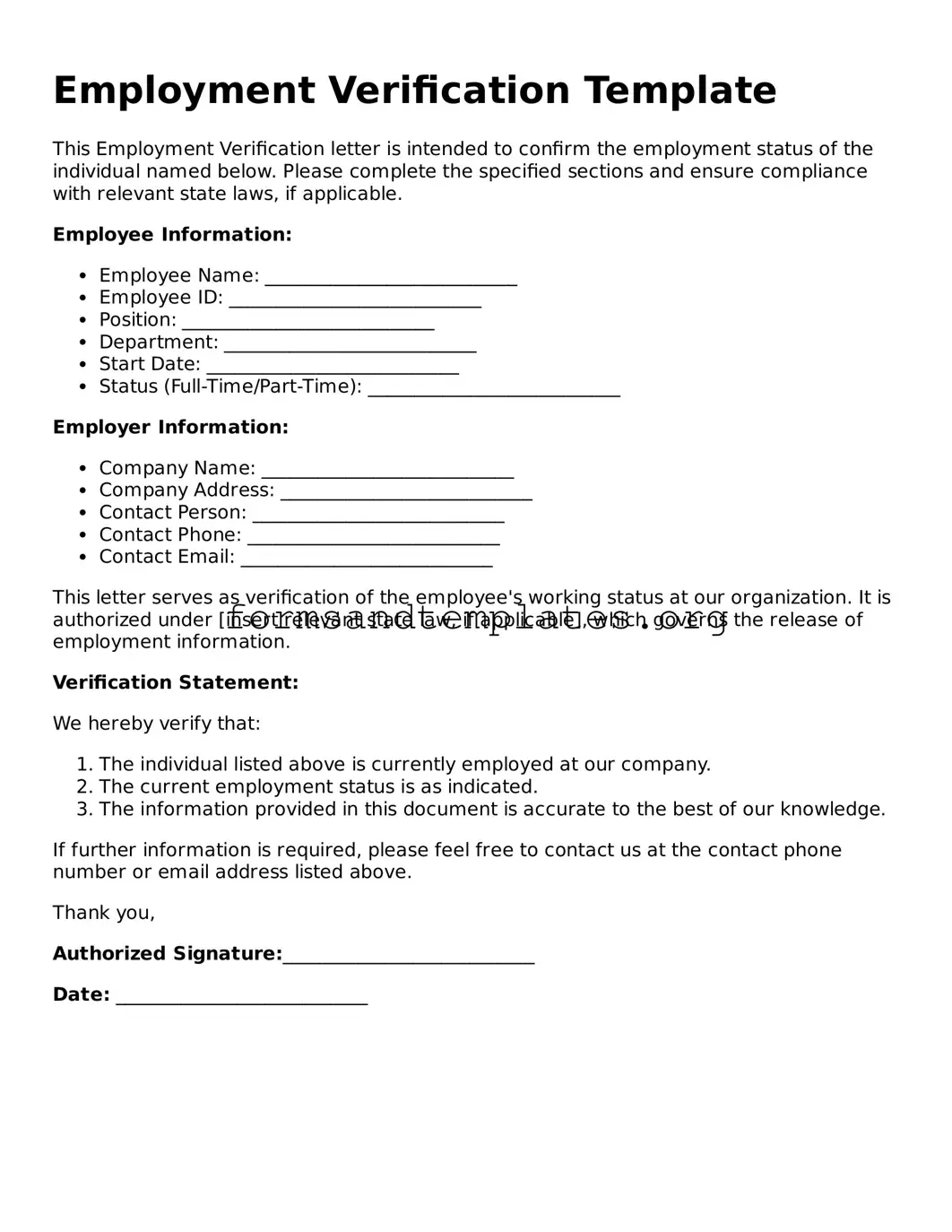An Employment Verification form is a document used to confirm a person's employment status. It typically includes details such as the employee's job title, dates of employment, and salary information. Employers or third parties often request this form to verify an individual's work history for purposes like loan applications or background checks.
Various parties may request this form, including:
-
Prospective employers conducting background checks
-
Lending institutions assessing loan applications
-
Government agencies for benefits eligibility
-
Property management companies during rental applications
The form is usually completed by the employer or human resources department. They will provide accurate information regarding the employee's job title, employment dates, and salary. It’s important to ensure that all information is truthful and up-to-date to avoid any complications.
Can an employee request their own Employment Verification?
Yes, an employee can request their own Employment Verification form. This can be useful when applying for a new job, a loan, or any situation where proof of employment is required. The employee should reach out to their employer or HR department to initiate the request.
Common information found in an Employment Verification form includes:
-
Employee's full name
-
Job title
-
Dates of employment (start and end dates)
-
Current salary or hourly wage
-
Employer's contact information
The Employment Verification form itself is not a legally binding document. However, the information provided must be accurate, as false statements can lead to legal consequences for the employer. It’s important for both parties to understand the implications of the information shared.
If an employer refuses to complete the Employment Verification form, the employee may need to discuss the situation with their HR department. It's possible that the employer has policies in place regarding employment verification. In some cases, the employee might need to provide alternative documentation to prove their employment status.
The time it takes to receive a completed Employment Verification form can vary. Typically, employers aim to respond within a few business days. However, factors such as company policies, workload, and the specific details requested can influence the turnaround time.
Can Employment Verification be done verbally?
Yes, Employment Verification can sometimes be done verbally. Many employers will provide confirmation over the phone, especially if they have established relationships with the requesting party. However, written verification is often preferred for record-keeping and accuracy.
What should I do if there are errors in the Employment Verification?
If you notice errors in the Employment Verification form, it's crucial to address them promptly. Contact your employer or HR department to request corrections. Providing accurate information is vital, as discrepancies can lead to misunderstandings or complications in your employment or financial applications.
